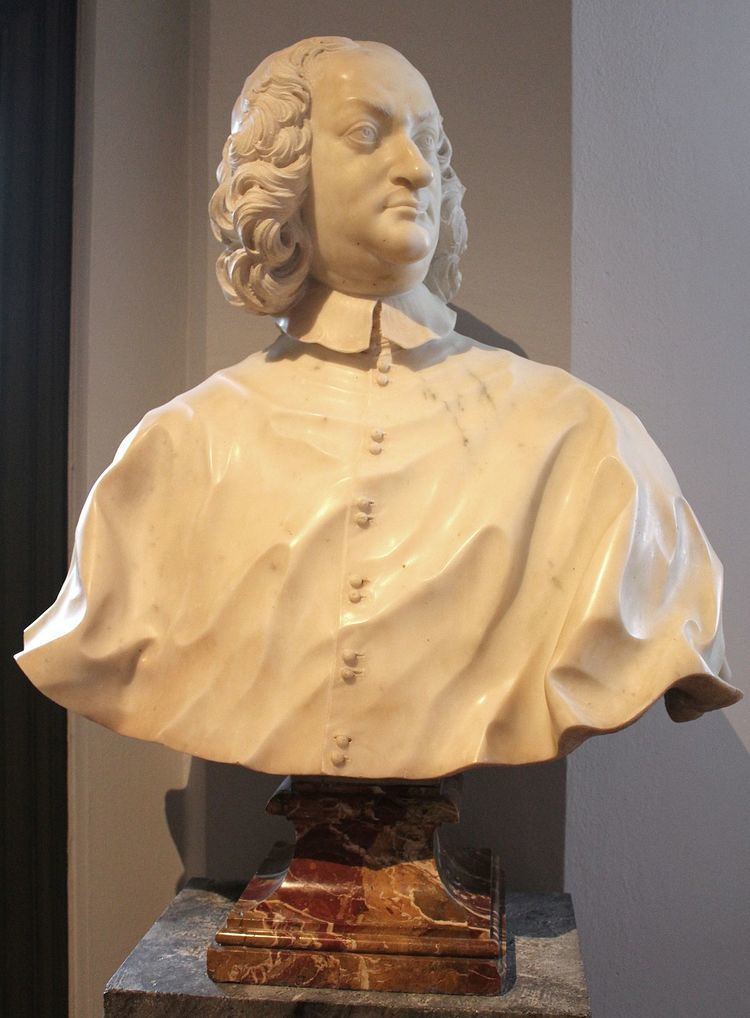Name Decio Azzolino | Died June 8, 1689, Rome, Italy | |
 | ||
Decio Azzolino (11 April 1623 – 8 June 1689) was an Italian Catholic Cardinal, code-breaker, investigator and leader of the Squadrone Volante.
Contents

Early life
Azzolino was born at Fermo, the son of Pompeo Azzolino and Giulia Ruffo. He was the great-nephew of Cardinal Decio Azzolino, the elder and is thus often referred to as Cardinal Decio Azzolino, the younger.
He received doctorates in philosophy, law and theology from the University of Fermo.
In January 18, 1642 Pope Urban VIII named Bishop Giovanni Giacomo Panciroli nuncio extraordinary to Spain. Azzolino followed Panciroli to Madrid, and in 1644 when Pope Innocent X appointed Panciroli Secretary of State, he began assisting him in the Secretariat. When Panciroli died in September 1651, Azzolino managed the Secretariat until the return of Bishop Fabio Chigi from Germany. Chigi was named Secretary of State in December.
As an agent of Donna Olimpia
Azzolino was a skilled cryptographer, responsible for cracking ciphers used in correspondence. He was also an able investigator. When the Kingdom of Naples was made aware of invasion plans by Henry II, Duke of Guise, it was Azzolino who (in February 1654) concluded that the breach must have come from Camillo Astalli, the Pope's Cardinal-Nephew. Though likely accurate, his conclusion was convenient - Astalli was a rival for power to Azzolino's own patron, Olimpia Maidalchini. Contemporary John Bargrave noted that there were plenty of spies within the Vatican but that none excelled at the task more than Azzolino.
Cardinalate
Later in 1654, because of this service he rendered to the pope, Azzolino was himself elevated to Cardinal and was made Cardinal-Priest of the Church of Sant'Adriano al Foro (Curia Julia), in Rome.
He participated in the papal conclave of 1655 which elected Pope Alexander VII. Azzolino was the leader of the independent liberal movement Squadrone Volante which played a role in engineering the result of the conclave in favour of an anti-nepotism candidate. Azzolino's Squadrone is also thought to have engineered the election of Giulio Rospigliosi as Pope Clement IX at the papal conclave of 1667. Rospigliosi, who had been Cardinal Secretary of State rewarded Azzolino by immediately (on the night of his election, in fact) appointing him to the position, giving further credence to the rumour.
Azzolino and Christina
Azzolino was appointed Queen Christina of Sweden's representative within the Catholic Church. It is certain he looked after her financial businesses. Some have speculated that he and Christina were in love with one another. Bargrave, again, suggested that Azzolino was sent to Romania by Pope Alexander in order to avoid public perception that a relationship was ongoing.
In July 1659 she moved to Trastevere to live in Palazzo Riario, on top of the Janiculus, designed by Bramante. It was Cardinal Azzolino who signed the contract, as well as provided her with new servants to replace Francesco Maria Santinelli, who had been Monaldeschi's executioner. Azzolino ensured that she was reconciled with the pope, and that the latter granted her a pension.
Christina wrote him many letters during her travels. On 26 January 1667 Christina wrote (in French) that she would never offend God or give Azzolino reason to take offence, but this "does not prevent me from loving you until death, and since piety relieves you from being my lover, then I relieve you from being my servant, for I shall live and die as your slave". Keeping up the celibacy his replies were more reserved.
In 1675 he suggested Christina to appoint Romolo Spezioli, also from Fermo, like Cesare Machiati, as her physician. Azzolino also introduced her to Miguel Molinos. In her basement there was a laboratory, where she, Giuseppe Francesco Borri and Azzolino experimented with alchemy. Cardinal Azzolino stayed at her side until she died on 19 April 1689.
Azzolino burnt most of their correspondence; about 80 letters have survived. Some details were written in a code that was decrypted by Carl Bildt, in Rome around 1900. Azzolino inherited her important art collection, including Correggio's Danaë and two versions of Titian's Venus and Adonis (probably the "Lausanne" and Getty versions). Azzolino died a few weeks later and is buried in the oratorium of the Church of Santa Maria in Vallicella. His nephew, Pompeo Azzolino, was his sole heir, and he rapidly sold off Christina's art collections, much of which later formed the core of the Orleans Collection.
